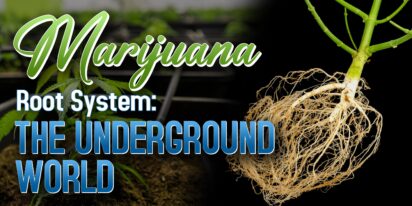
Are You 18 Or Over?
YesOr
No By clicking yes, you certify that you are over 18. By using this website, you agree to our legal disclaimer.605+ Cannabis Strains over 20 Breeders worldwide.
Table of Contents

Table of Contents
Nutrient burn occurs when plants receive an excess of nutrients, leading to chemical imbalances within their systems. This overabundance disrupts normal metabolic functions, resulting in visible damage. Symptoms may include yellowing or browning of leaves, leaf tip burn, and overall diminished vitality.
To effectively address nutrient burn, it’s crucial to identify the underlying causes and implement targeted solutions.
Recognizing the signs of nutrient burn is the first step in addressing the issue. Common symptoms include:
Nutrient burn can also manifest differently depending on the type of plant and the specific nutrients involved. Some plants may exhibit symptoms more prominently than others, making it essential to closely monitor your plants’ health.
Nutrient burn often indicates an imbalance in essential macronutrients such as nitrogen (N), phosphorus (P), and potassium (K), as well as micronutrients like iron, magnesium, and calcium. These nutrients play crucial roles in plant growth and development, and an excess or deficiency can disrupt metabolic processes.
Nitrogen, for example, is essential for leafy green growth but can cause burn symptoms when overapplied. Phosphorus is vital for root development and flowering but can lead to toxicity if levels are too high. Potassium helps regulate water uptake and enzyme activation but can result in leaf scorch if present in excess.
By understanding the roles of different nutrients and their effects on plant health, you can better diagnose and treat nutrient burn effectively.
Addressing nutrient burn requires a multi-faceted approach tailored to the specific needs of your plants. Here’s a step-by-step guide on how to effectively treat nutrient burn:
Begin by flushing the soil with plain, pH-balanced water. This helps to remove excess salts and nutrients accumulated in the soil, restoring a healthier balance. Ensure thorough watering until runoff is clear.
Review your fertilization regimen and adjust nutrient levels accordingly. Opt for a balanced fertilizer with an N-P-K ratio appropriate for your plant species. Gradually reintroduce nutrients to avoid further stress.
Evaluate your watering schedule to prevent overhydration, which can exacerbate nutrient burn. Allow the soil to partially dry between watering sessions, ensuring proper drainage to prevent waterlogging.
Trim away damaged foliage to promote new growth and prevent the spread of stress signals throughout the plant. Use sterile pruning tools to minimize the risk of infection.
Ensure your plants receive sufficient light exposure suited to their specific requirements. Proper lighting encourages photosynthesis and enhances overall plant resilience.
Improve air circulation around your plants to reduce humidity levels and minimize the risk of fungal infections. Use fans or natural ventilation to create a conducive growing environment.
Supplement soil nutrients with foliar feeding, applying a diluted fertilizer solution directly to the leaves. This facilitates rapid nutrient absorption and supports plant recovery.
Incorporate organic soil amendments such as compost or aged manure to improve soil structure and nutrient retention. These natural amendments provide a slow-release source of nutrients, promoting long-term plant health without the risk of burn.
Monitor soil pH levels and make adjustments as needed to optimize nutrient availability. Most plants prefer slightly acidic to neutral soil conditions, so use pH testing kits to ensure the soil remains within the optimal range.
Avoid over-reliance on synthetic fertilizers and instead focus on balanced feeding with organic alternatives. Organic fertilizers release nutrients gradually, reducing the risk of nutrient burn while promoting soil health and microbial activity.
If nutrient burn persists despite your efforts, consider seeking advice from a professional horticulturist or agricultural extension service. They can provide personalized recommendations based on soil tests and plant observations, helping you address underlying issues effectively.
Once you’ve successfully treated nutrient burn, take preventative measures to avoid recurrence in the future. This includes maintaining proper fertilization practices, monitoring soil health, and regularly inspecting plants for signs of stress or nutrient deficiencies.
Continue to monitor your plants’ health and make adjustments as needed to ensure they remain vibrant and thriving. Regular observation allows you to detect early warning signs of nutrient imbalances or other issues, preventing future problems before they escalate.
In conclusion, nutrient burn is a manageable issue that requires proactive intervention and proper care. By following the outlined steps and implementing targeted solutions, you can effectively treat nutrient burn and restore your plants to optimal health and vitality. Remember to stay vigilant, prioritize plant health, and enjoy the rewarding experience of nurturing thriving greenery.

[ez-toc] In indoor gardening, maintaining an optimal temperature within your grow tent is crucial for the health and productivity of your plant

[ez-toc] Welcome to the delightful world of cannafudge crafting, where sweetness meets sophistication, and cannabis infusion adds a unique twis

[ez-toc] You’ve finished trimming your weed, but what about those leftover stems? Don’t throw them away! These seemingly useless bits can a

Feeling high can be an exhilarating experience, but it's essential to make the most of it by engaging in activities that enhance the sensation a

[ez-toc] Starting with planting cannabis seeds might seem simple, but how deep should cannabis seeds be planted for them to grow well. In this

[ez-toc] In the realm of cultivating cannabis, maximizing growth during the flowering stage is a top priority for growers. While various method

[ez-toc] Nutrient burn is a common issue among plant enthusiasts, often resulting from over-fertilization or improper nutrient application. It

[ez-toc] Welcome to our complete guide to dealing with harmful pathogenic mold in cannabis. For those who grow cannabis, preventing mold is vit

In recent years, there has been speculation about “did Shakespeare smoke weed?” This idea originates from a study by South African anthropol

[ez-toc] Welcome to the hidden world beneath the soil – the inside of the marijuana root system. While the vibrant leaves and resinous flower

Are You 18 Or Over?
YesOr
No By clicking yes, you certify that you are over 18. By using this website, you agree to our legal disclaimer.